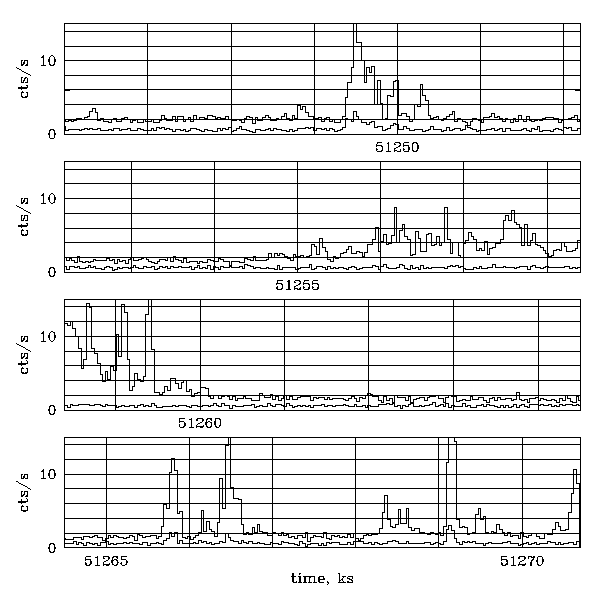
The ACIS background consists of a relatively soft XRB contribution and cosmic ray-induced events with a hard spectrum. Most cosmic ray events can be filtered out by applying a grade filter (e.g., rejecting ASCA grades 1,5,7). After such filtering, the XRB component dominates below about 2 keV (during the quiescent background intervals, see below) and the cosmic ray component dominates at higher energies, consistently with the pre-launch estimates.
A phenomenon not anticipated prior to launch that can seriously affect the scientific value of an observation is background flares when the count rate can increase by a factor of up to 100. Such flares have been observed anywhere in the orbit, including near the apogee. They are most prominent in the BI chips but also affect the FI chips. The nature of these flares is under investigation, but they generally correlate with the increased EPHIN rate for soft electrons. The flares are easily seen in the ACIS light curves; several examples are shown below.
The figure below shows an observation moderately affected by the flares (OBSID 1190). The horizontal axis gives Chandra time; the rates shown are for the BI chip S3 (upper curve) and the FI chip I2 (lower curve), for ASCA grades 02346 and energies below 10 keV. Although celestial sources were not excluded from these light curves, the flux is dominated by the background:

(here is a postscript version of the plot)
The rate is constant most of the time but there are several strong flares. Note how chip S3 is affected more strongly by these flares.
Below is an example of an extremely bad observation (OBSID 1232 taken on 1999 Aug 27). The first figure shows the rate for S3 (only grades 02346 and energies 0.3-10 keV are included; celestial sources are excluded). Compare to the average rate of 1.2 cts/s/chip during the quiescent intervals:
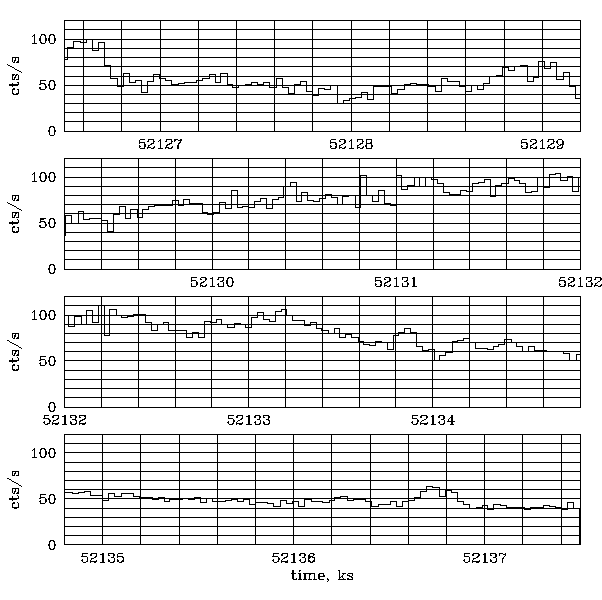
And these are light curves for the FI chips S2 (upper curve) and I2 (lower curve) from the same observation; compare to the quiescent rates of 0.5-0.7 cts/s/chip:
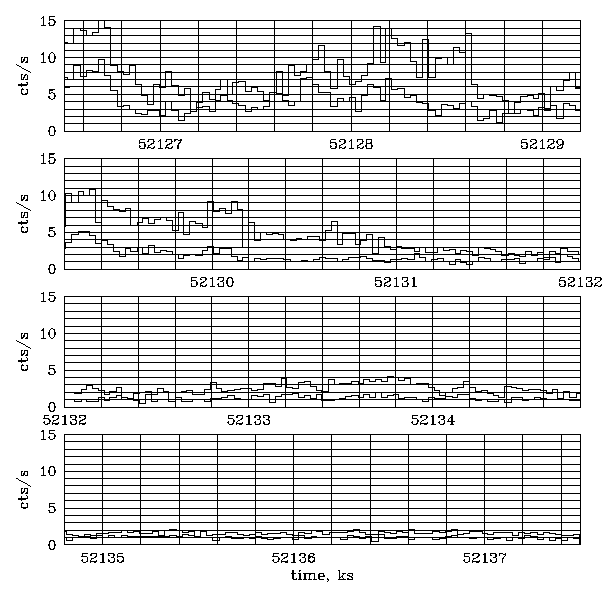
The figure below shows the background spectra during a moderate flare and during a quiescent interval (OBSID 1226) in the area of chip S3 free of sources. Their exposures are similar (9-10 ks):
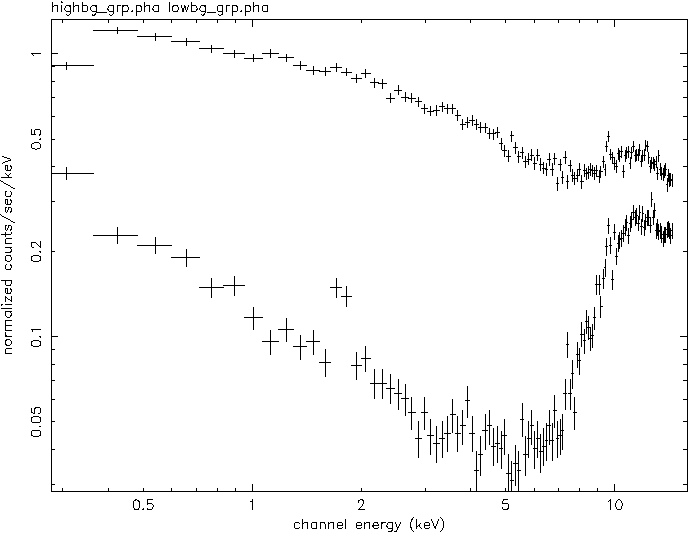
The next figure shows a difference of the above spectra normalized by their exposures, to give an idea of the spectrum of the additional background component arising during the high rate intervals:
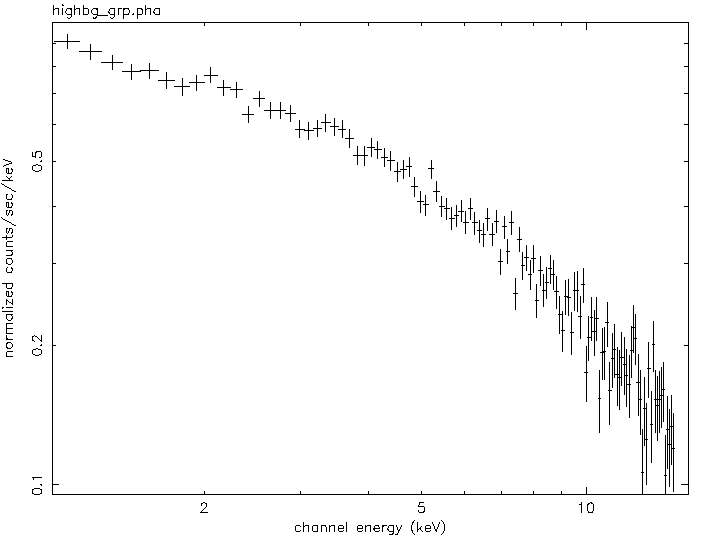
The telescope effective area drops off much more steeply than this spectrum does, thus the component is not due to X-rays reflected by the mirror.
S3 chip: 1.10-1.20 cts/s S2 chip: 0.50-0.60 cts/s I2,I3 chips: 0.45-0.50 cts/s
In the 0.5-7 keV energy band, the values are:
S2 chip: 0.29-0.32 S3 chip: 0.51-0.53 S4 chip: 0.65 (note that this chip is bad below 2 kev)The picture for the FI chips is complicated by the August 1999 sharp CTI increase. It causes some of the good grades to migrate to grades 5,7 and be rejected by the standard grade filtering applied to derive the above values. The BI chips are unaffected.
From a number of long ACIS exposures, it appears that roughly 1/3 of the time the BI chip background rate is more than twice the quiescent rate and 1/10 of the time it is 10 times the quiescent rate. For the FI chips, about 1/6 of the time the background rate is twice the quescent rate. The plots below show the cumulative frequency of a background rate being higher than a certain factor of the quiescent rate. These plots are made using a total of about 200 ks of ACIS observations taken during the last two weeks of August 1999 (standard ASCA grades, 0.3-10 keV band, 64 s bins). The target flux was roughly estimated and subtracted, but most observations were dominated by the background. No effort was made to create a "representative" set of observations (I just used all that I had on my disk, excluding very bright targets), but the dataset includes all points of the orbit.

For observations of faint extended objects, it will usually be best to discard the time intervals with flares. Even though this can significantly shorten the exposure, the flares are so bright that it may still increase the signal to noise ratio. The flares are easily identifiable in the ACIS light curve; a tool to automate such cleaning is being tested.
The Cal team is also accumulating the observations of empty fields free of background flares. Such a dataset could be used to evaluate the detector+cosmic background for those observations where the source fills the field of view. Because outside the flares, the background is relatively constant, such a background dataset could be normalized by the respective exposures, after the observation has been cleaned of the flares.